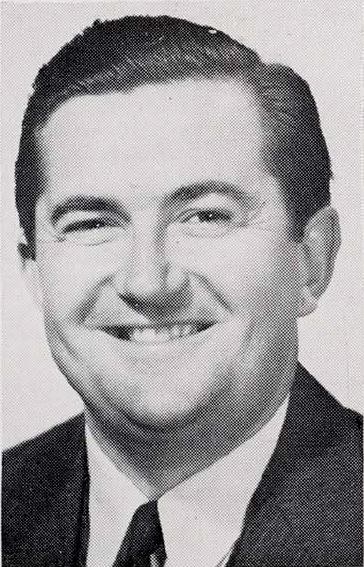The Albert C. Hildebrandt Plant Pathology Library was established in 2003 through a gift to the Department of Plant Pathology from the estate of alumnus Albert C. Hildebrandt.

Dr. Albert C. Hildebrandt, 1916-2001. Image: Univ. of Wisconsin
Mission
The Albert C. Hildebrandt Plant Pathology Library, housed in Buckhout Laboratory, consists of a collection of books, journals, and other selected materials related to plant pathology and serves the faculty, staff, and students as a resource of research and teaching information. The Albert Hildebrandt Library Endowment also makes possible open access to the American Phytopathological Society's Plant Disease Management Network, an online resource available to the Penn State community through the Penn State University Libraries. The Albert C. Hildebrandt Plant Pathology Library supports a digital photo archive of Plant Pathology information, including a historical archive and a continuously updated archive of plant disease symptoms and related information. The purpose of the library is to enhance library holdings in current plant pathology scientific literature, to increase student access to digital research opportunities, and to support graduate education and research.
History
Dr. Albert Christian Hildebrandt was a Professor of Plant Pathology and an internationally recognized leader in developing the science of plant tissue culture. He developed techniques for isolating and growing cells from healthy plant tissues in culture, and used these techniques to develop single celled cultures and eventually differentiation of whole plants from single cells. He was active in studies of cell metabolism and tissue differentiation, and an early advocate of using cell fusion as a means of transferring genetic traits. His work became the basis for development of techniques for plant transformation used extensively today to develop genetically engineered plants. Dr. Hildebrandt trained twenty-one graduate students during his career, many of whom became leaders in the area of plant tissue culture.
A native of State College, Pennsylvania, Dr. Hildebrandt was born on April 10, 1916. He graduated from Penn State with a B.S. degree in Botany in 1939 and during his time in college served as the captain of the Penn State tennis team. He then earned an M.S. degree in Plant Pathology at Penn State with his thesis on "Investigations of Twig Canker of Peach" in 1941. At the University of Wisconsin, he received his Ph.D. in Plant Pathology in 1945 with extensive studies on in vitro growth of tumor cells from plants infected with Agrobacterium tumefaciens. Joining the Wisconsin faculty in 1949, he retired in 1978 and died on January 4, 2001. It was his wish to contribute to the educational mission of the discipline of plant pathology at his undergraduate alma mater through the endowment of the Penn State University Plant Pathology Library. We honor his wishes today through the continued maintenance of this educational resource.
Whenever you use sources such as books, journals, or Web sites in your research papers you must give credit to the original author by properly citing the sources. Citations also help your reader find the sources again. There are a number of different citation styles, depending on the discipline in which you are working. The following links provide guidelines to using a variety of citation styles.
Resources for students and faculty in the Plant Science and Plant Pathology & Environmental Microbiology departments
Databases and resources for Penn State faculty, staff, and students studying turf science
Databases and resources for Penn State faculty, staff, and students researching mushroom production and mycology
Department of Plant Pathology and Environmental Microbiology
- Office 814-865-7448
- Fax 814-863-7217
Department of Plant Pathology and Environmental Microbiology
- Office 814-865-7448
- Fax 814-863-7217

